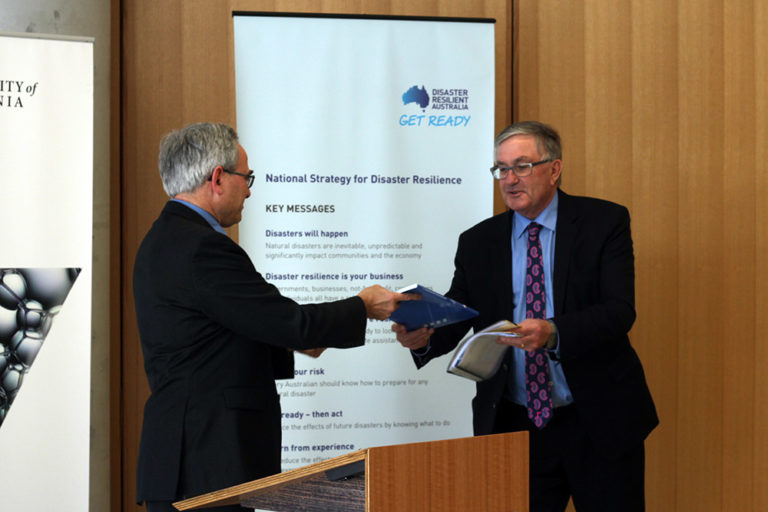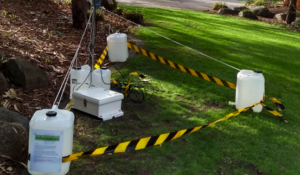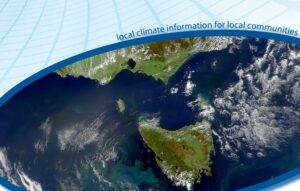
A collaboration between the University of Tasmania, RMIT University and the ACE CRC’s Climate Futures group has produced Tasmania’s most comprehensive natural disaster risk assessment, providing emergency services with key information to help prepare for and reduce the impact of future disasters.

The 2016 Tasmanian State Natural Disaster Risk Assessment (TSNDRA) wasbe presented to Police, Fire and Emergency Management Minister Rene Hidding MP at an official launch by the University’s Dean of the Faculty of Science, Engineering and Technology Professor Brian Yates.
The University’s Dr Chris White and the project team – including Dr Tom Remenyi and Dr Stuart Corney from the Antarctic Climate and Ecosystems Cooperative Research Centre (ACE CRC) and Professor Darryn McEvoy and Alexei Trundle from RMIT University – were commissioned by the Tasmanian State Emergency Service to produce the report.
“The report provides the State Government with an evidence-based support tool for decision-making, to enable well-informed decisions about preparing for, and minimising, natural disaster risk,” Dr White said.
“While the project does not predict the likelihood or the severity of natural disasters – such as this year’s devastating bushfires and floods – it does look at the risks posed by these events and how to reduce the impact.”
Tasmania is the first state or territory to adopt the new National Emergency Risk Assessment Guidelines (NERAG) introduced by the Australian Government last year, making this risk assessment the most up-to-date in the nation.
The assessment is conducted every four to five years, but the 2016 report is the first to be undertaken by an external agency.
The research team began work in March 2015 with a review of the previous 2012 TSNDRA report, then conducted eight risk workshops with stakeholders, including State-wide government agencies and emergency management bodies, from first responders to planners and managers.
“We developed this report in close collaboration with emergency management agencies and government departments, who have invaluable on-ground experience and knowledge to deal with these kind of events,” Dr White said.
“As academic researchers, we have been able to bring new insights and expertise into the process and to draw upon up-to-date international research in the field.”
The report includes three new natural hazards that have been assessed for the first time: heatwaves, coastal inundation and human influenza pandemic, in addition to floods, bushfire, landslide, tsunami, earthquake and severe storms.
Professor Yates said the report showed the benefit of a close collaboration between the University and the emergency management sector.
“Combining the knowledge gained from rigorous academic research with years of experience from those on the frontline of emergency management can only benefit Tasmania and its people in terms of our preparedness to respond to natural disaster,” Professor Yates said.
The report was jointly funded by the Commonwealth and State Governments under the National Partnership Agreement on Natural Disaster Resilience.








